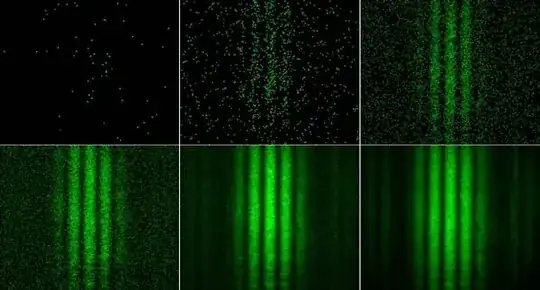Is light always in this dual state or when it is acting as wave, there is no particle nature and vice versa?
1 Answers
Is light always in this dual state or when it is acting as wave, there is no particle nature and vice versa?
In studying physics and the definitions of the concepts used in developing the mathematical models describing the data, one has to be clear of the framework of the discussion.
There are the following frameworks with different mathematical modeling:
1) Classical:
1.a) Newtonian mechanics
1.b) Maxwell's electromagnetic theory
1.c)statistical mechanics (the Newtonian mechanics of many body kinematics)
1.d)thermodynamics ( which is emergent from statistical mechanics)
2.a)What is called first quantization with the solutions of Th Schrodinger equatiion on potential problems
2.b) Quantum electrodynamics (electromagnetism at the quantized level)
2.c) Quantum field theory ( applied to elementary particles)
2.d)Quantum statistical mechanics ( the statistical mechanics modifiedbyquantum solutions)
There is also special relativity and general relativity, which should be classified in both frames.
Confusions and paradoxes arise if one mixes two frameworks without a clarifying statement.
The terminology "light" belongs to 1.b. The particle nature of light belongs 2.d . I.e light as a classical concept is completely described by the solutions of the Maxwell's equations which define it as a wave with excellent predictive power. The wave nature appears in the intensity of the magnetic and electric fields that describe light.
The terminology "particle" and "dual" belongs totally to the quantum mechanical framework.
So in the classical framework light is always described as a wave.
The story changes if the quantum mechanical level is examined. There light is emergent from an enormous number of particles called photons, which build up the classical electromagnetic wave, and this can be shown mathematically. .
Photons as elementary particles have the dual quantum mechanical nature. When detected as individual photons they display particle properties, i.e. localization in (x,y,z,t). But the probability density for finding the photon about this point, i.e. if many photons are detected, has a wave property. This can be seen clearly in this double slit experiment:
the diffraction of individual photon from a double slit recorded by a single photon imaging camera (image intensifier + CCD camera). The single particle events pile up to yield the familiar smooth diffraction pattern of light waves as more and more frames are superposed (Recording by A. Weis, University of Fribourg).
The first frames, top left, show individual photon hits, which seem random, while the accumulation shows the probability density of finding a photon, it has a diffraction pattern characteristic of the light frequency these photons build up.
Physics is not a simple subject, the concepts build up and a lot of mathematical modeling is needed to organize the observations and be able to predict new results. But the logical structure above of the frameworks in which one should work should be kept clear.
- 236,935
